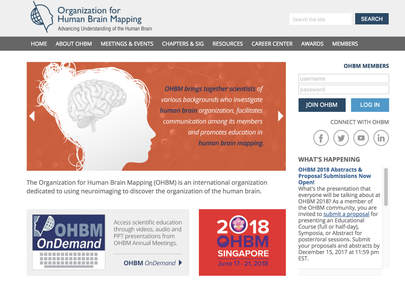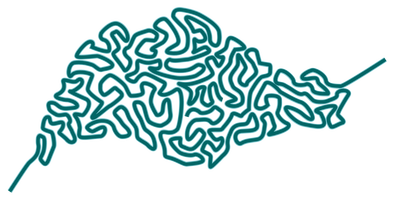 New OHBM Homepage New OHBM Homepage This month OHBM launched its new website. This long-standing project dates back to 2014, when a membership-needs survey revealed that OHBM members wanted more online resources for educational advancement and career opportunities. There was also a desire for outlets in which to promote new influential research and controversies in human brain mapping and engage our members outside of the annual meeting - issues now addressed through the OHBM blog, the non-member media, and social media accounts. For the website, members wanted this new functionality in a clear, intuitive layout that was more responsive to dynamic content and the changing needs of the brain mapping community. Thus, the story of a new website began.
0 Comments
By Csaba Orban, Valeria Kebets, Thomas Yeo on behalf of the OHBM 2018 Local Organizing Committee (LOC)  Click on image to go to the "brain-in-sinc" website Click on image to go to the "brain-in-sinc" website As you may have heard, OHBM 2018 will be hosted in Singapore. Come join us to learn about the latest developments in neuroimaging methodologies and applications, and to meet like-minded scientists in a highly inter-disciplinary forum. This year’s meeting will have a special focus on multimodal imaging, an LOC symposium on mapping functional connectivity to behaviors in young and aging populations, while also featuring the ever-popular educational sessions and the must-go Hackathon. You can visit our dedicated brain-in-sinc website (right), which highlights attractions in and beyond Singapore, delicious cuisine, and essential travel tips from our local volunteer group. BY JEAN CHEN
David Van Essen is the winner of the prestigious 2017 Glass Brain Award from the Organization of Human Brain Mapping (OHBM). David is the Alumni Endowed Professor in the Department of Neuroscience at Washington University in St. Louis, and he chaired the department for 20 years. He was Principal Investigator (PI) for the original Young Adult Human Connectome Project (HCP, jointly with Dr. Kamil Ugurbil from the University of Minnesota) and is currently a co-PI for the Lifespan HCP Development, Lifespan HCP Aging, and Connectome Coordination Facility projects. He was also founding chair of the OHBM Council. The Glass Brain Award is selected annually "to recognize lifetime achievement by leading researchers using or facilitating neuroimaging to discover original and influential findings". David was recognized for his illustrious career of charting the brain over more than 50 years. His journey in brain mapping has taken him from Harvard to Oslo to University College London (UCL, as a postdoctoral fellow), and then as faculty at Caltech and at Wash U. |
BLOG HOME
Archives
January 2024
|
 RSS Feed
RSS Feed